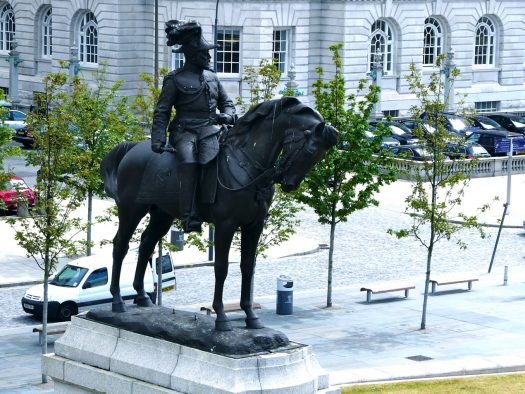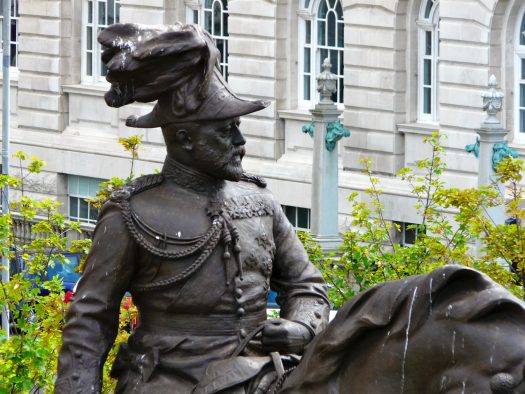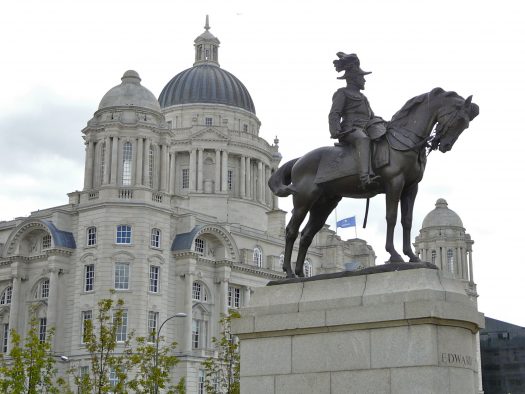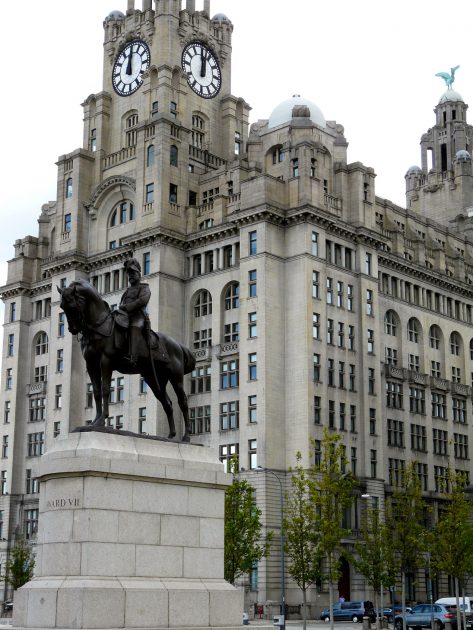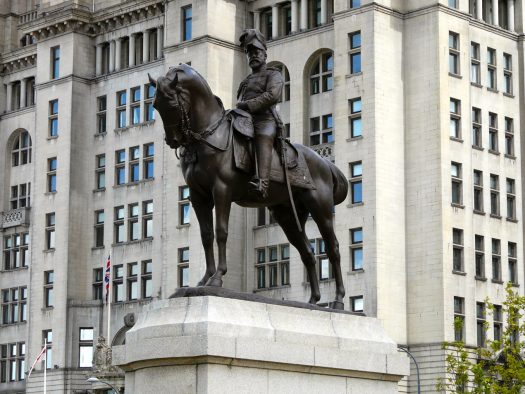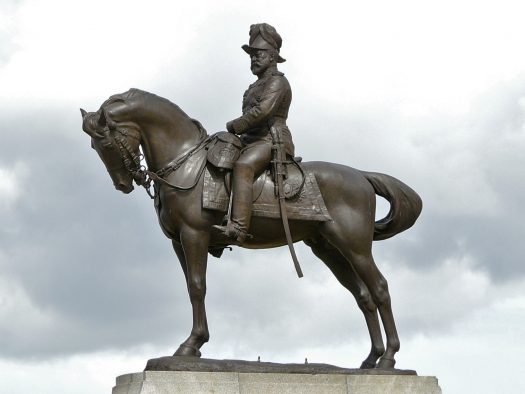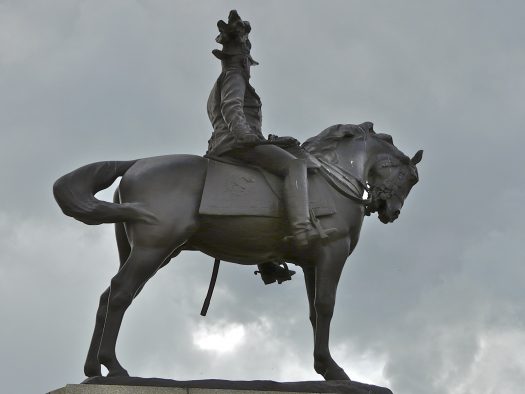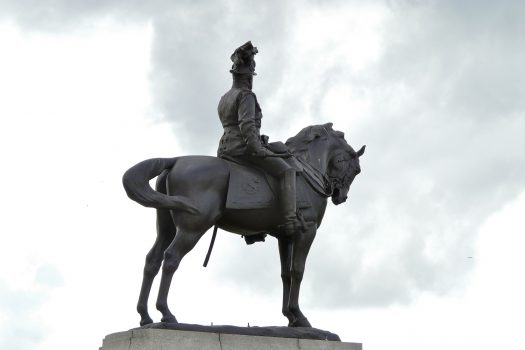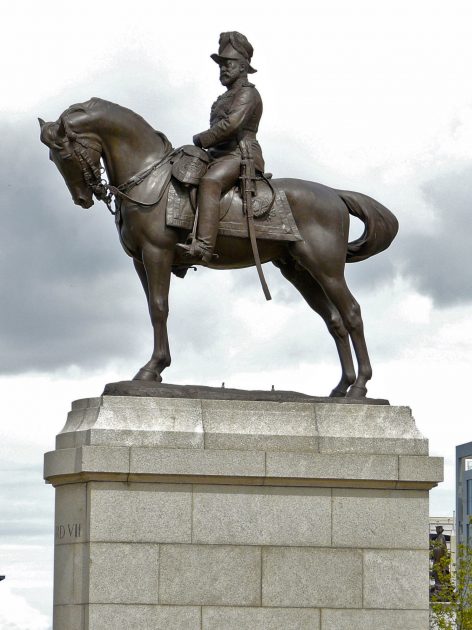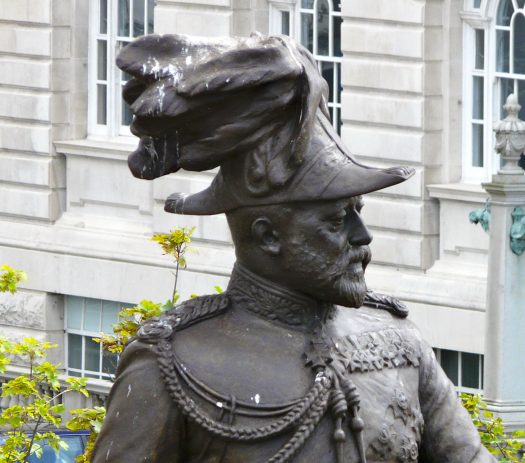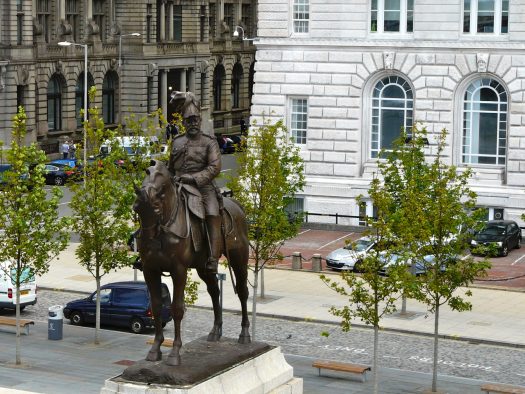- CountryUK
- Town:Liverpool
-
Year of creation:1916
- Rider(s):Edward Vll
(1841 –1910) was King of the United Kingdom of Great Britain and Ireland and Emperor of India from 1901 until his death in 1910.
The eldest son of Queen Victoria and Prince Albert of Saxe-Coburg and Gotha, Edward was related to royalty throughout Europe. He was Prince of Wales and heir apparent to the British throne for almost 60 years. During the long reign of his mother, he was largely excluded from political power, and came to personify the fashionable, leisured elite. He travelled throughout Britain performing ceremonial public duties, and represented Britain on visits abroad. His tours of North America in 1860 and the Indian subcontinent in 1875 were popular successes, but despite public approval, his reputation as a playboy prince soured his relationship with his mother.
As king, Edward played a role in the modernisation of the British Home Fleet and the reorganisation of the British Army after the Second Boer War. He reinstituted traditional ceremonies as public displays and broadened the range of people with whom royalty socialised. He fostered good relations between Britain and other European countries, especially France, for which he was popularly called “Peacemaker”, but his relationship with his nephew, the German Emperor Wilhelm II, was poor. He died in 1910 in the midst of a constitutional crisis that was resolved the following year by the Parliament Act 1911, which restricted the power of the unelected House of Lords.
(source: Wikipedia)
- Sculptor(s):Goscombe John, William
(1860 –1952), was a Welsh sculptor.
-
Edward VII has more equestrian statues outside the UK than within it: two in Australia and India, one in France and one in Canada.
The statue in Liverpool has recently been restored and has an attractive setting on the waterfront. When the statue was restored, not only dirt but also layers of protective black and yellow paint and even car primer had to be removed from it. These bear witness to earlier efforts to preserve the sculpture in its unusually exposed waterfront location. The details of the King’s features and his regalia can now be seen more clearly.
